Exhibition
Nomata Minoru (1955- ) graduated from the Department of Design at Tokyo University of the Arts and worked as an art director at an advertising agency, where he continued to paint in his free time while working as a designer. In 1986, he had the opportunity to exhibit his works in his first solo exhibition at the Sagacho Exibit Space. Already from this period, there are mysterious structures in Nomata's paintings that seem to be from some time in the past, or the future. Are they in the process of being built or are they about to decay? One of the characteristics of Nomata's paintings is that they allow the viewer to enter the world that transcends time and space, and to let our mind to play freely.

1986
acrylic on canvas
72.7 × 91.9 cm
Artist Collection
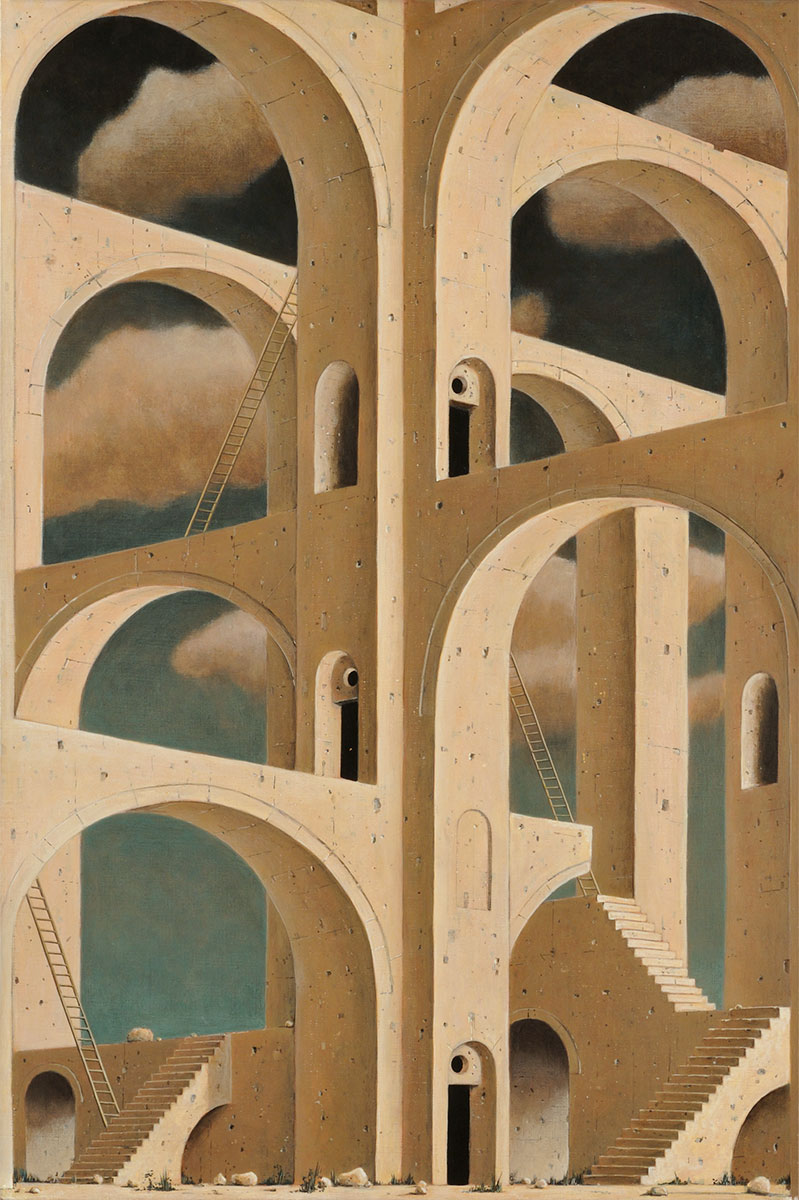
1988
acrylic on canvas
91.0 × 60.6 cm
Tokyo Opera City Art Gallery
photo: Hayakawa Koichi
In the 1990s, the buildings depicted by Nomata became larger and show a unique aspect, as if the earth and human-made objects are combined and towering. Structures in which nature and architecture are harmoniously integrated, as if animals (human beings) had built a nest, are becoming increasingly unrealistic, but at the same time they make us feel nostalgic. Perhaps this is because they evoke memories of ancient times, when our lives were inextricably connected to the earth.
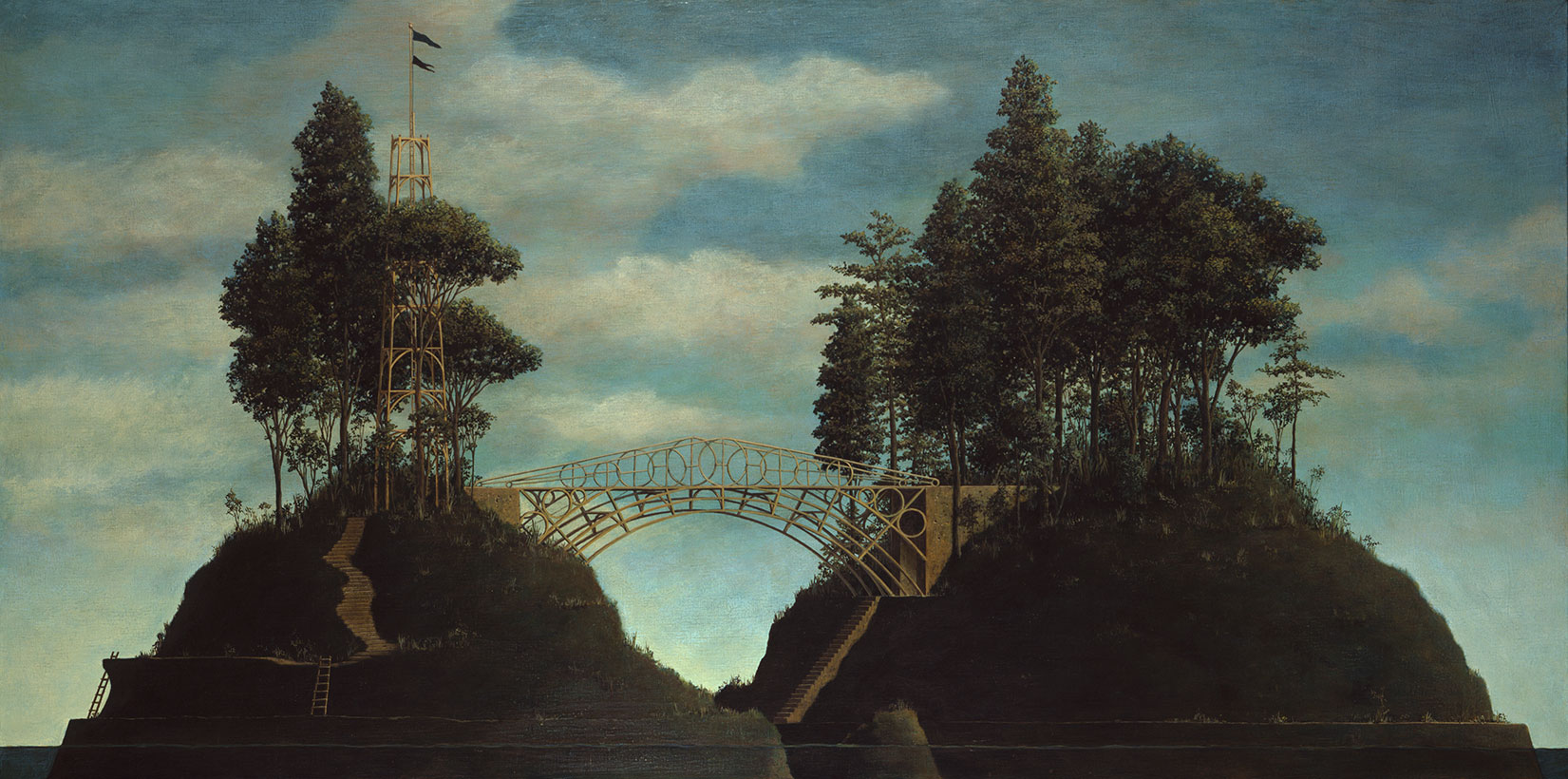
1992
acrylic on canvas
65.4 × 130.5 cm
Tokyo Opera City Art Gallery
photo: Hayakawa Koichi
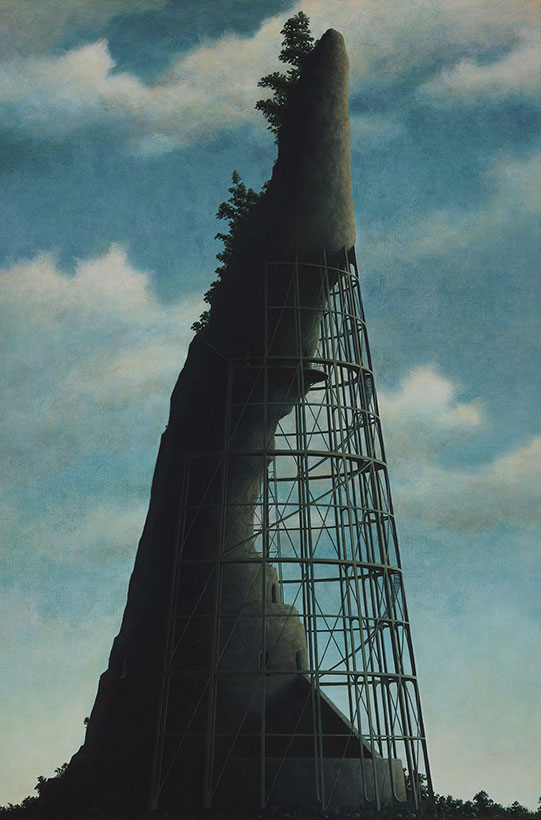
1993
acrylic on canvas
145.5 x 98.0cm
Tokyo Opera City Art Gallery
photo: Takahashi Kenji
In Nomata's paintings from the late 1990s to the early 21st century, Nomata's works show structures such as ship sails, windmills and balloons that appear to have some kind of function. However, who built them and for what purpose remains a mystery. The presence of flowing air became more noticeable during this period. The industrial structures simultaneously represent the 'chi/air' that fills the picture plane. The antagonism between nature and human is one of Nomata's interests, and Babel 2005 [2005], a work inspired by an actual large-scale urban development shows his question towards human desire, symbolises his point of view.
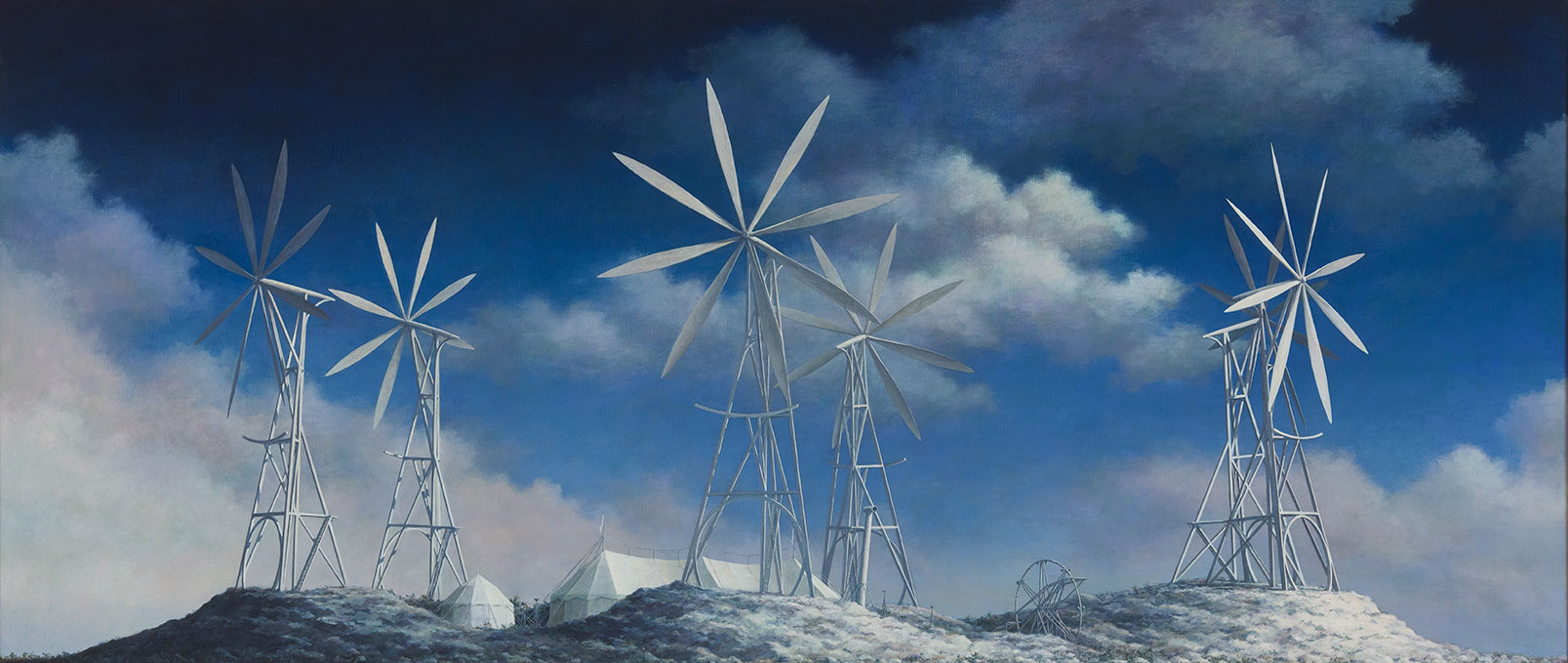
1997
acrylic on canvas
97.4 × 227.6 cm
Tokyo Opera City Art Gallery
photo: Takahashi Kenji
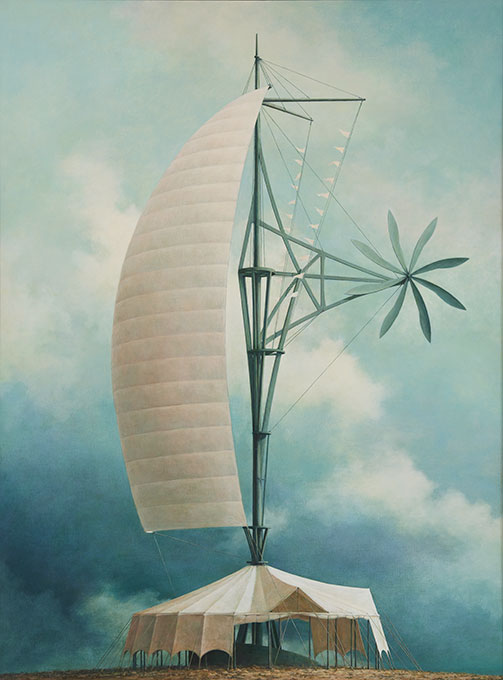
1999
acrylic on canvas
130.5 × 97.2 cm
Tokyo Opera City Art Gallery
photo: Takahashi Kenji
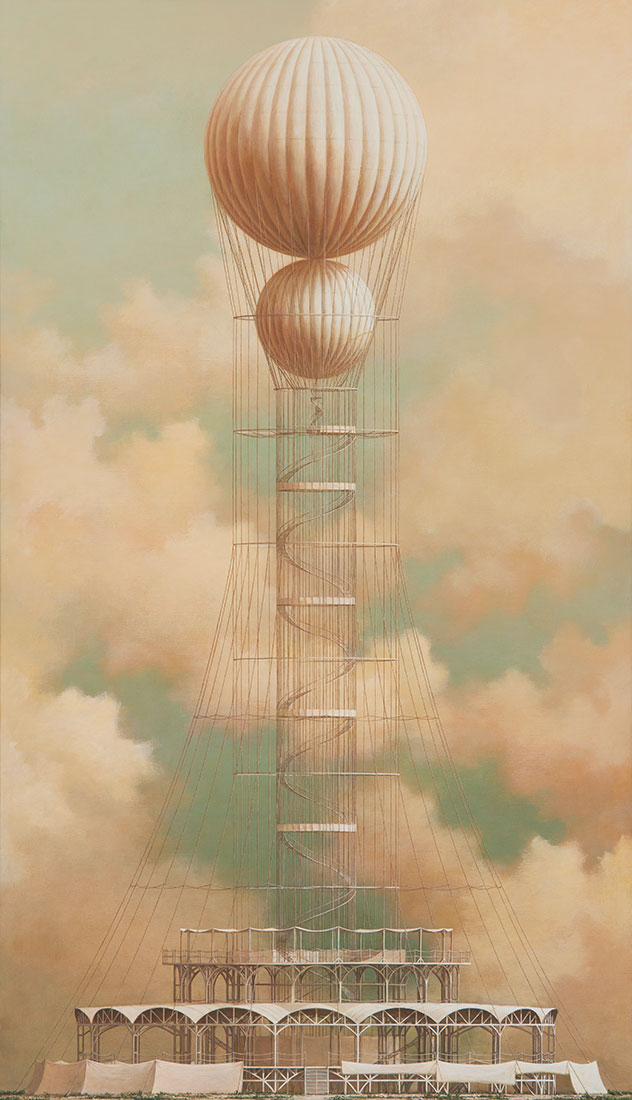
2001
acrylic on canvas
194.2 × 112.1 cm
Tokyo Opera City Art Gallery
photo: Takahashi Kenji
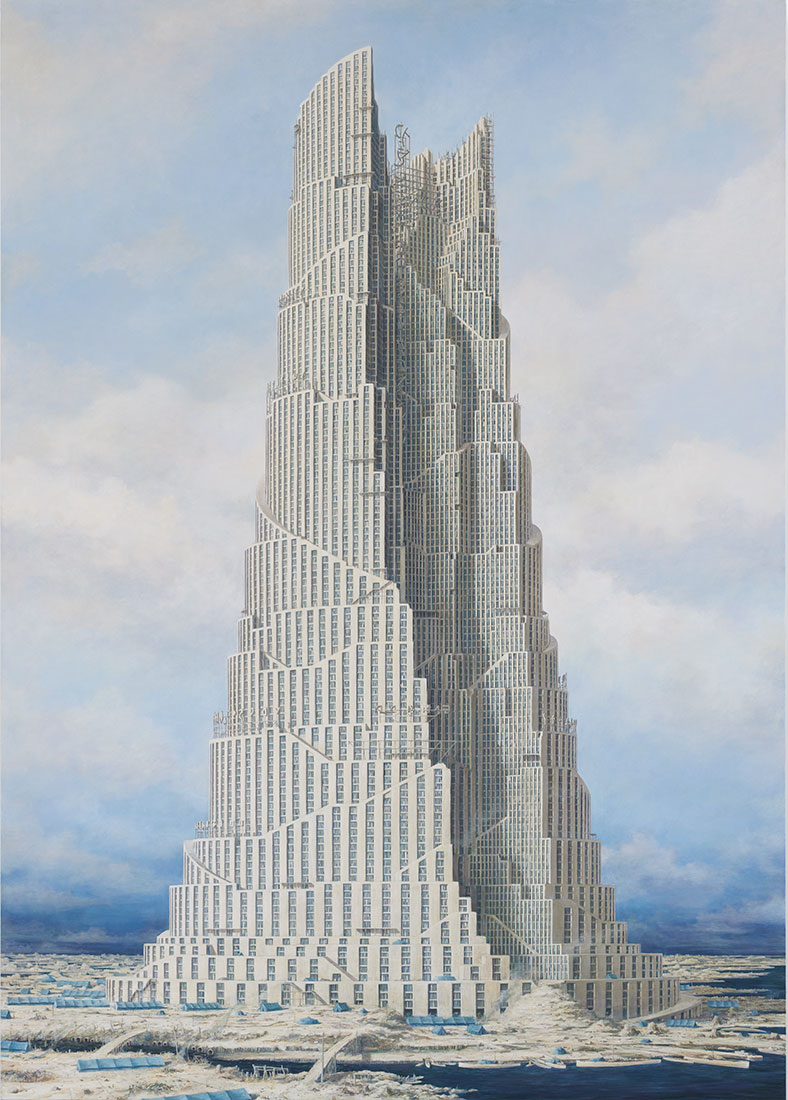
2005
acrylic on canvas
226.5 × 162.0 cm
Tokyo Opera City Art Gallery
photo: Takahashi Kenji
The series 'Skyglow' (2008) is perhaps the most radical in its depiction of structures and the characteristic of creating atmosphere in the picture plane. The structures themselves are shrouded in darkness, while the shimmering light is the subject matter. The Great East Japan Earthquake that occurred a few years later had a major impact on Nomata's work. Seeing the structures he had painted many times before destroyed by the overwhelming forces of nature, Nomata was temporarily unable to face the canvas. The series 'Square Drawing' (2011-15) was produced during this period. Through these drawings, in which Nomata drew what is important for him as if to confirm one by one, his paintings arrived at the latest series, 'Continuum', that is, a totality characterised as a set and sequence of a diversity of elements and events.
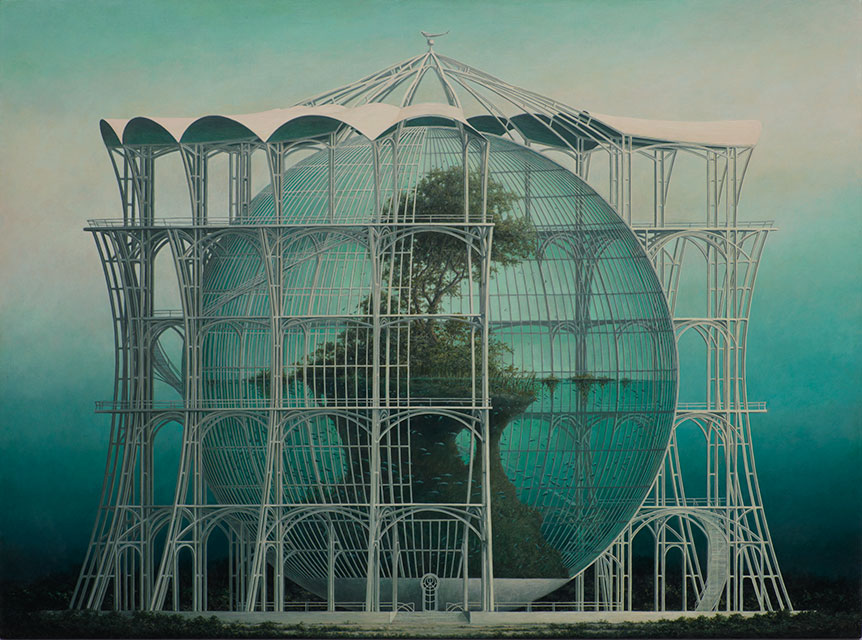
2010
acrylic on canvas
120.3 × 162.1 cm
Artist Collection
photo: Kogure Toru

2013
acrylic on canvas
97.5 × 194.4 × 3.5 cm
Artist Collection
photo: Kioku Keizo

2018
acrylic on canvas
130.5 × 89.5 cm
Artist Collection
photo: Kioku Keizo
*Year shown is the year that the work debuted




